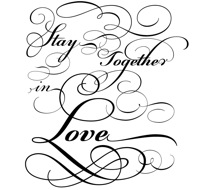Difference between revisions of "Font"
(Created page with 'File:lighterstill.jpgright|frame ==Origin== [http://nordan.daynal.org/wiki/index.php?title=English#ca._1100-1500_.09THE_MIDDLE_ENGLISH_PERIOD Mi...') |
m (Text replacement - "http://" to "https://") |
||
| (One intermediate revision by the same user not shown) | |||
| Line 2: | Line 2: | ||
==Origin== | ==Origin== | ||
| − | [ | + | [https://nordan.daynal.org/wiki/index.php?title=English#ca._1100-1500_.09THE_MIDDLE_ENGLISH_PERIOD Middle English], from [https://nordan.daynal.org/wiki/index.php?title=English#ca._600-1100.09THE_OLD_ENGLISH.2C_OR_ANGLO-SAXON_PERIOD Old English], from Late Latin ''font''-, ''fons'', from [[Latin]], [[fountain]] |
| − | *[ | + | *[https://en.wikipedia.org/wiki/12th_century before 12th Century] |
| − | The term font, a doublet of the word [ | + | The term font, a doublet of the word [https://en.wikipedia.org/wiki/Fondue fondue], derives from Middle French ''font'', meaning "(something that has been) melt(ed)", referring to type produced by casting molten metal at a [https://en.wikipedia.org/wiki/Type_foundry type foundry]. English-speaking printers have used the term fount for centuries to refer to the multi-part metal type used to assemble and print in a particular size and typeface. |
==Definitions== | ==Definitions== | ||
*1a : a receptacle for [[baptismal]] [[water]] | *1a : a receptacle for [[baptismal]] [[water]] | ||
| Line 11: | Line 11: | ||
*2: [[source]], fountain <a font of [[information]]> | *2: [[source]], fountain <a font of [[information]]> | ||
==Description== | ==Description== | ||
| − | '''Font''' nowadays is frequently used synonymously with the term "[ | + | '''Font''' nowadays is frequently used synonymously with the term "[https://en.wikipedia.org/wiki/Typeface typeface]", although before the advent of [https://en.wikipedia.org/wiki/Digital_typography digital typography] and desktop publishing, "font" referred to a single size and "typeface" referred to a set of otherwise identical fonts of [[different]] sizes. |
| − | Beginning in the [ | + | Beginning in the [https://en.wikipedia.org/wiki/1980's 1980s], with the introduction of [https://en.wikipedia.org/wiki/Computer_font computer fonts], a broader [[definition]] for the term "font" evolved. Different sizes of a single style—separate fonts in metal type—are now generated from a single computer font, because [https://en.wikipedia.org/wiki/Vector_font vector shapes] can be scaled freely. "Bulmer", the typeface, may include the fonts "Bulmer roman", "Bulmer italic", "Bulmer bold" and "Bulmer extended", but there is no separate font for "9-point Bulmer italic" as opposed to "10-point Bulmer italic". |
| − | There are [ | + | There are [https://en.wikipedia.org/wiki/List_of_typefaces thousands of typefaces].[https://en.wikipedia.org/wiki/Font] |
[[Category: Publishing]] | [[Category: Publishing]] | ||
Latest revision as of 23:56, 12 December 2020
Origin
Middle English, from Old English, from Late Latin font-, fons, from Latin, fountain
The term font, a doublet of the word fondue, derives from Middle French font, meaning "(something that has been) melt(ed)", referring to type produced by casting molten metal at a type foundry. English-speaking printers have used the term fount for centuries to refer to the multi-part metal type used to assemble and print in a particular size and typeface.
Definitions
- 2: source, fountain <a font of information>
Description
Font nowadays is frequently used synonymously with the term "typeface", although before the advent of digital typography and desktop publishing, "font" referred to a single size and "typeface" referred to a set of otherwise identical fonts of different sizes.
Beginning in the 1980s, with the introduction of computer fonts, a broader definition for the term "font" evolved. Different sizes of a single style—separate fonts in metal type—are now generated from a single computer font, because vector shapes can be scaled freely. "Bulmer", the typeface, may include the fonts "Bulmer roman", "Bulmer italic", "Bulmer bold" and "Bulmer extended", but there is no separate font for "9-point Bulmer italic" as opposed to "10-point Bulmer italic".
There are thousands of typefaces.[1]
